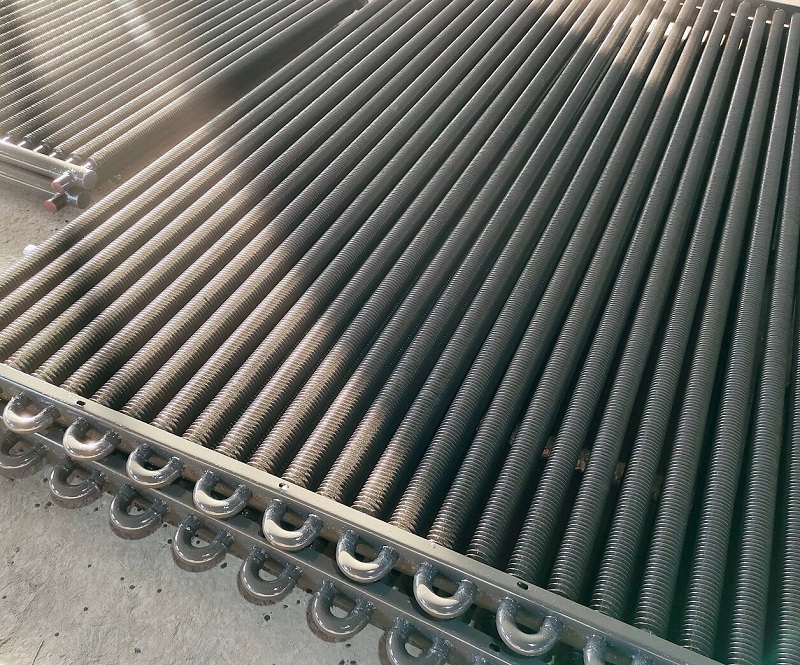Finned pipe heat transfer
Finned pipes are used in a variety of heat exchange applications to enhance the heat transfer rate between the primary fluid inside the pipe and the secondary fluid (or surrounding environment) outside the pipe. By adding fins to the external surface of the pipe, the surface area available for heat transfer is increased, thus improving the overall efficiency of the heat exchanger.
Key concepts related to finned pipe heat transfer:
1. Finned Pipe Heat Transfer Types of Fins:
- Longitudinal Fins: These run along the length of the pipe.
- Helical or Spiral Fins: These wrap around the pipe in a spiral pattern.
- Annular Fins: These are ring-shaped fins that go around the pipe circumference.
2. Finned Pipe Heat Transfer Heat Transfer Mechanism:
- The primary mechanism is conduction through the fin material and then convection to or from the surrounding fluid.
- For effective heat transfer, the fin material should have good thermal conductivity.
3. Finned Pipe Heat Transfer Efficiency and Effectiveness:
- Fin Efficiency: The ratio of the actual heat transfer from the fin to the maximum possible heat transfer if the entire fin were at the base temperature.
- Overall Surface Efficiency: This takes into account the efficiency of both the bare tube and the fins.
- The effectiveness of a finned surface will be higher if the fin efficiency and the overall surface efficiency are both high.
4. Finned Pipe Heat Transfer Fin Spacing and Size:
- Fins should be spaced adequately to allow for sufficient airflow (or fluid flow) between them. If fins are too closely spaced, there could be a significant drop in convection efficiency due to increased resistance to fluid flow.
- Fin size and shape can be optimized based on the intended application and the properties of the working fluids.
5. Finned Pipe Heat Transfer Materials:
- Common materials for fins include aluminum and copper due to their high thermal conductivity. The choice of material can influence the overall performance and cost of the heat exchanger.
6. Finned Pipe Heat Transfer Applications:
- Finned pipes are commonly used in air-cooled heat exchangers, automotive radiators, air conditioning systems, and various other industrial applications where space is at a premium or where an increase in heat transfer surface area is desired.
7. Finned Pipe Heat Transfer Equations and Analyses:
- Detailed analyses of finned pipes often require the use of specialized heat transfer equations that consider the geometry of the fins, the thermal conductivity of the materials, fluid properties, flow rates, and other factors.
- One such equation, for rectangular straight fins, determines fin efficiency as:
\[ \eta_{fin} = \tanh(m \cdot L) / (m \cdot L) \]
Where:
\( m = \sqrt{2h/(\kappa \cdot t)} \) \( h \) is the convection coefficient, \( \kappa \) is the thermal conductivity of the fin material, \( t \) is the fin thickness, and \( L \) is the fin length.
When designing or selecting a finned pipe heat exchanger, its essential to consider the specific requirements of the application, including the desired heat transfer rate, the properties of the working fluids, the available space, and any constraints related to weight, cost, or durability.


